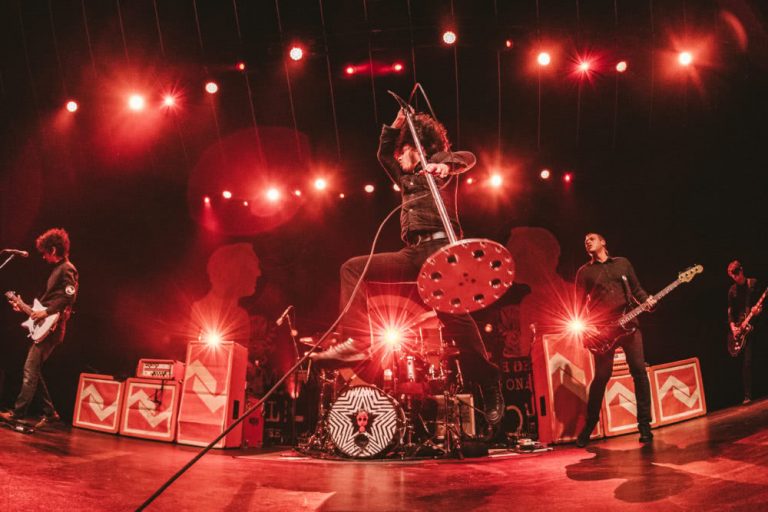El Paso, 1993. Two teenage musos are locked in debate over the name for their fledgling band. The theme, at least, is settled – they both dig that their heroes in Bad Brains took their moniker from a Ramones track, and they want to pay it forward. The vocalist, Cedric Bixler-Zavala, likes ‘At The Movies’. Guitarist Jim Ward wants to rejig it a little – it could stand to sound a little cooler.
Ward’s choice of title eventually wins out; somewhat ironically, the moniker ultimately outlasts his own inclusion in the band he created. His absence from At The Drive In’s 2016 reformation is the last vestige of their acrimonious history; another prominent scar the band wears as a mark of wisdom gained through bitter experience.
WIN a vinyl copy of At The Drive In’s new album here
Kinder journalists refer to the 16-year gap as a “pause”, a term loaded with the imminence of reset; the band’s more sobering turn of phrase at the time was “indefinite hiatus” – a death knell every music fan instinctively recognises. It’s a phrase that reeks of blood, of catastrophic system failure, of ‘artistic differences’ tastefully curated to cover widening personal rifts.
In 2001, the Texan post-hardcore quintet parted ways just months after releasing their third studio LP. Things had been rough between them – to put it very mildly – for some time, and nearly seven thankless years of touring in deadbeat venues to hostile crowds had soured whatever taste they had left for their work. Despite their managers’ faith in the new release and exciting prospects on the horizon, At The Drive In considered themselves dead to rights.
Of course, history would vindicate those pleading managers – the album was Relationship Of Command, a critical and commercial barnstormer that laid the groundwork for a generation of angry young musicians and proved a regular fixture in ‘greatest record of all time’ lists for decades to come. But back to the break-up.
Co-founder and manic vocalist Bixler-Zavala took responsibility for the break-up, citing a desire to progress in a different musical direction along with bassist-turned-guitarist Omar Rodríguez-López. But by the time of the album’s release, an abyss had widened, carving the band in half. On one side were Bixler-Zavala and Rodríguez-López, firmly entrenched in their opioid addiction; they would go on to style themselves as dub duo De Facto before creating The Mars Volta, a crack-addled prog take on ATDI’s post-hardcore style, neck-deep in abstraction and featuring a revolving door of musical artists. On the other side were guitarist Jim Ward, bassist Paul Hinojos and drummer Tony Hajjar; after ATDI’s demise, they became Sparta, a more natural progression into commercially appealing pop-punk.
Love Music?
Get your daily dose of metal, rock, indie, pop, and everything else in between.
The rift wasn’t just creative, however. “During the last tour with At The Drive In, I don’t think I’ve ever consistently played so many shitty shows in my life, and that’s because of my drug use,” Bixler-Zavala confessed to Harp writer Trevor Kelly in 2006. “I don’t even remember half of the shows.”
Sadly, Bixler-Zavala’s memory was far from the only victim of the band’s extreme lifestyle.
We can be grateful for At The Drive In’s return, as their righteous fury is needed now as much as ever.
At 17, Bixler-Zavala invited Rodríguez-López into the band; he’d made friends with the guitarist while rehearsing with another band. Rodríguez-López was fresh from a ‘gap year’, of sorts – 12 months in which he hitchhiked his way out of ‘Hell Paso’ to experience what the United States could offer. He brought with him a fresh energy, enough money gained from flipping narcotics to buy musical gear, and a serious drug habit.
Kicking out chunky pop-punk tunes on their first EPs, At The Drive In proved aurally unremarkable, but made a name for their unleashed behaviour onstage. Fuelled by the classic cocktail of youthful swagger and chemical encouragement, they pushed themselves to progress; In/Casino/Out’s release in 1998, and the subsequent EP Vaya the following year, gave an indicator of the shot in the arm the band would soon give to the hardcore and punk genres.
Rage Against The Machine and the burgeoning nu-metal scene had already captured some of the scattershot rage of the early ’90s, but the punk scene was missing an equivalent. Enter a band proudly declaring its distinction from ‘hardcore’ music; one carrying a political agenda that didn’t override its music, espoused in labyrinthine rhetoric and buried under spasmodic hooks.
As lyricist, Bixler-Zavala danced on a knife edge of clarity; his lexicon could pass for articulate if it didn’t so closely resemble a dictionary lobbed into a jet engine. He would distinguish himself as the wildest man on any given stage, donkey-kicking and leaping from amp stacks with wild abandon – but should any crowd members mosh too violently, he rained verbal fire down on them. Bixler-Zavala’s rants became viral before the term had online applications – his bleating at the “sheep” and “robot[s]” in 2001’s Big Day Out crowd ended the set early.
Rodríguez-López, on guitar, would often end sets by hurling himself bodily into his own amp; he also did his best to wholly derail the band’s nationally broadcast appearance on Later… With Jools Holland. The high-intensity gigs, they said, took their toll.
The higher price was paid off stage. Bixler-Zavala and Rodríguez-López became increasingly absent from the studio, sharing their narcotic habits with local artist Julio Venegas. In the same year as At The Drive In would release their debut album, Acrobatic Tenement, Venegas’ substance abuse reached its zenith. After injecting himself with any chemical he could grasp, causing his arm to shrivel horrifically, he slipped into a coma. A month later, on recovering, he dove head-first from a freeway overpass.
Venegas’ death would leave an indelible mark on At The Drive In; they first eulogised him with the song ‘Ebroglio’, and Bixler-Zavala would go on to thinly veil him in the alias of Cerpin Taxt in the hallucinatory debut from The Mars Volta, De-Loused In The Comatorium.
As fate would have it, the lead-up to De-Loused’s release saw another tragedy – Volta’s “sound manipulator” Jeremy Ward (Jim’s cousin) overdosed and died in 2003, aged 27. His diaries would inspire The Mars Volta’s second album, Frances The Mute.
Wracked by addiction and lost in grief, Bixler-Zavala and Rodríguez-López took stock of their situation and chose to sober up. This was perhaps the clincher that allowed for At The Drive In’s eventual reconciliation. Had they continued in such hedonistic fashion, In•ter a•li•a may never have come to pass. In fact, they may well have followed Cerpin Taxt beyond the veil themselves.
At The Drive In’s surprise reunion gig at Coachella in 2012 was simply meant to “close the chapter on that era”, in Rodríguez-López’s words. For a few glorious moments, these five men could relive their formative years, giving the fans who had never witnessed their explosive live shows that once-in-a-lifetime gift. And they could mend the gaping holes in their relationships.
Bixler-Zavala would spend the tour claiming a disconnect from ATDI’s music (later revealed to be melancholy brought on by the death of his mother), repeatedly ruling out the possibility of recording new material. 11 years, countless bands and three dear friends (including The Mars Volta’s Isaiah ‘Ikey’ Owens) had passed – they were different people now, free from drugs and willing to forgive. A new album was out of the question.
Now, In•ter a•li•a is upon us, despite the absence of Jim Ward; his slot is now filled by fellow Spartan Keeley Davis. According to Bixler-Zavala, Ward “simply wasn’t ready”. It’s possible that Jeremy’s death while performing with The Mars Volta is too great a rift to overcome.
Still, we can be grateful for At The Drive In’s return, as their righteous fury is needed now as much as ever. They’ve made a career of pouring gold into the cracks in their rear-view mirror – for the first time in 16 years, it finally feels like they are looking forward, eyes ablaze.
In•ter a•li•a is out now through Rise/Cooking Vinyl. At The Drive In play the Hordern Pavilion on Friday September 29.

































